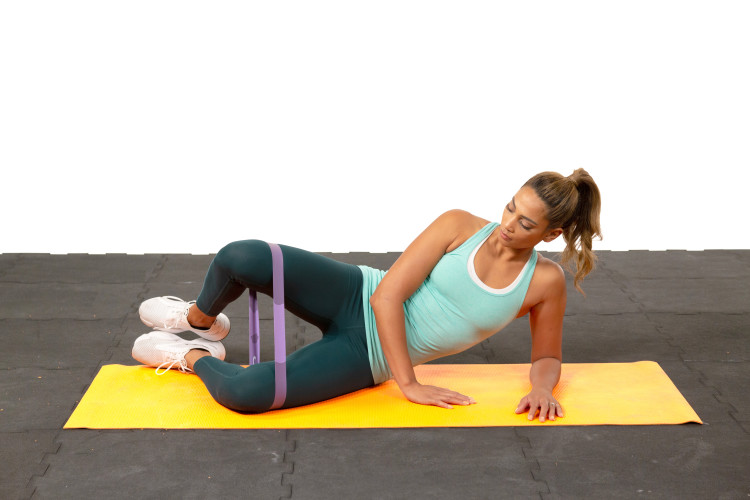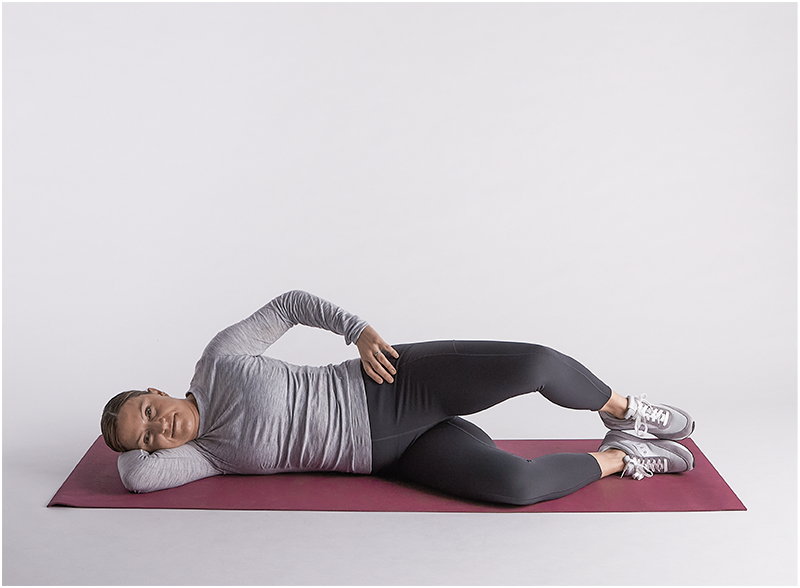If you’re looking to strengthen your glutes and stabilize your hips, then the clamshell exercise is a must-try. This simple yet effective movement targets the gluteus medius and gluteus maximus, helping you achieve your sculpted glute goals. Today, we’ll share many benefits of incorporating the clamshell exercise into your routine.

Contents
12 Benefits of Clamshell Exercise
Let’s take a look at 12 advantages that make the clamshell exercise worth including in your workout:
- Glute Activation: The clamshell exercise specifically targets and activates the gluteus medius and gluteus maximus, helping to strengthen and sculpt your glutes.
- Hip Stabilization: By engaging the muscles surrounding the hips, the clamshell exercise helps stabilize and improve hip mobility, reducing the risk of injury.
- Improved Lower Body Alignment: Performing the clamshell exercise with proper form promotes better alignment in the hip complex and lower back, resulting in improved overall posture.
- Correcting Quad Dominance: If you find yourself relying on your quadriceps (quads) instead of your glutes during lower body movements, the clamshell exercise can help rebalance your muscle activation and reduce quad dominance.
- Enhanced Core Strength: The clamshell exercise requires core engagement to maintain stability, supporting the development of a strong and stable core.
- Injury Prevention: Strengthening the glutes and improving hip stability through the clamshell exercise can help prevent injuries, such as hip pain, knee pain, and lower back discomfort.

- Improved Athletic Performance: Strong glutes and stabilized hips are essential for optimal athletic performance in activities like running, jumping, and lifting weights.
- Postpartum Recovery: The clamshell exercise is often recommended for postpartum women as it helps in restoring hip strength, stability, and function after pregnancy.
- Burn Calories: While the clamshell exercise may not be a high-intensity cardio exercise, it still contributes to calorie burn, helping with weight management and fat loss.
- Versatility: The clamshell exercise can be modified and progressed to accommodate different fitness levels and provide ongoing challenge and improvement.
- Time Efficient: The clamshell exercise can be performed in just a few minutes, making it a convenient option for those with a busy lifestyle.
- Accessible: You can do the clamshell exercise at home, in the gym, or anywhere you have enough space to lie down, making it accessible to everyone.
How to Perform the Clamshell Exercise?
Here’s a step-by-step guide to help you get started:
- Lie on your side: Begin by lying on your side on a comfortable mat or surface. Keep your body in a straight line, with your head, shoulders, hips, and legs all aligned.
- Bend your knees: Bend your knees at a 90-degree angle, keeping your feet together. This will create a clamshell shape with your legs.
- Engage your core: Pull your belly button in towards your spine to engage your core muscles. This will help stabilize your body throughout the exercise.
- Activate your glutes: Keeping your feet together, lift your top knee as high as you can without moving your pelvis or rolling back. Focus on using your glute muscles to initiate the movement.
- Return to the starting position: Slowly lower your top knee back down to meet your bottom knee. Be mindful of maintaining control throughout the movement.
- Repeat on the other side: After completing the desired number of repetitions, switch sides and perform the exercise on the opposite side.
Muscles Targeted by the Clamshell Exercise
Here are the muscles that are targeted by the clamshell exercise:

1. Gluteus Medius:
The primary muscle targeted by the clamshell exercise is the gluteus medius. Located in the buttocks, the gluteus medius is responsible for hip abduction and stabilization. By strengthening this muscle, you can improve your balance and prevent common injuries, such as knee pain and hip instability.
2. Gluteus Maximus:
The gluteus maximus, the largest muscle in the buttocks, is also engaged during the clamshell exercise. This powerful muscle is responsible for hip extension and plays a vital role in various movements, including walking, running, and jumping. Strengthening the gluteus maximus can enhance your lower body power and overall athletic performance.
3. Tensor Fasciae Latae (TFL):
The clamshell exercise also targets the tensor fasciae latae (TFL). This muscle is located on the outside of the hip and is involved in hip flexion, abduction, and internal rotation. Strengthening the TFL can help improve lower body alignment and reduce the risk of overuse injuries, such as iliotibial band syndrome.
4. Adductors:
While primarily known for targeting the gluteal muscles, the clamshell exercise also engages the adductors. These muscles are located on the inner thigh and are responsible for hip adduction. Strengthening the adductors can enhance overall lower body stability and provide better support for various dynamic movements.
Frequently Asked Questions
Are clamshells good for inner thighs?
The clamshell exercise primarily targets the glutes and hip muscles, but it can also engage the inner thigh muscles. Performing controlled and repeated movements can provide a good burn and help strengthen the inner thighs.
Do clamshell exercises grow glutes?
The clamshell exercise can strengthen the medial glutes, improving power and stability in the hips. This can reduce the risk of lower body injuries, enhance stability in agility workouts, and increase strength and power in squats.
What grows glutes the fastest?
Exercises like barbell hip thrusts, back squats, front squats, Bulgarian split squats, deadlifts, and Romanian deadlifts are known to effectively grow glutes.

Hello, I’m Ravindra. Over the years, I’ve immersed myself deeply into the world of fitness and health, transforming both my body and mind. Writing has allowed me to share my journey, insights, and expertise with those just starting out and seasoned fitness enthusiasts alike. Beyond just routines and diets, I believe in inspiring others to adopt a holistic approach to well-being.
